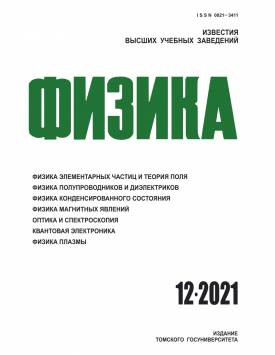Numerical simulation of physical fields by the collocation method
The article describes the collocation method for the numerical solution of mathematical physics boundary value problems. By arranging the collocation nodes in a special way in the solution problem domain, it is possible to significantly increase the accuracy of the numerical solution by improving the quality of the linear algebraic equations system, to which the solved boundary value problem leads. Various basic functions systems are analyzed. The proposed method allows one to obtain an approximate solution of boundary value problems for a wide range of linear and nonlinear elliptic, parabolic and wave equations in an analytical form. To confirm the effectiveness of the numerical methods under study, two-dimensional and three-dimensional boundary value problems were solved for linear and nonlinear equations of various types with known solutions. The dependences of the numerical solution error on the linear equations number in the resulting system are obtained. It is shown that even with a small equations in number of the system, a solution accuracy is achieved that exceeds the accuracy obtained by alternative numerical methods. The numerical method under study makes it possible to dramatically expand the field of application of traditional numerical methods when solving applied problems for modeling various physical fields, described by linear and nonlinear mathematical physics equations. The developed method is used to solve a quantum mechanical problem for a hydrogen molecule ion. The value of the ion ground state energy found for the minimum collocation nodes number differs from the experimentally obtained value by 13%. The results obtained in this work show the high potentialities of the complete collocation method, which are based on the universality of the method and the high accuracy of numerical solutions.
Keywords
collocation method, point source method, numerical solution, equations of mathematical physics, ion of a hydrogen molecule, energy eigenvalues, eigenfunctionsAuthors
| Name | Organization | |
| Shcherbakova E.E. | Don State Technical University | sherbakovaee@mail.ru |
| Knyazev S.Yu. | Don State Technical University | ksy@donpac.ru |
References
